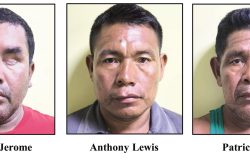MOGADISHU, (Reuters) – Somalia’s al Qaeda-linked rebels struck at the heart of the capital Mogadishu today, killing at least 65 people with a truck bomb in the group’s most deadly single attack since launching an insurgency in 2007.
Witnesses said a truck exploded at the gate of a compound housing four government ministries in the K4 (Kilometre 4) area of Mogadishu, where students had gathered to sit exams.
“We have carried 65 dead bodies and 50 injured people,” ambulance coordinator Ali Muse told Reuters. “Some are still lying there. Most of the people have burns.”
Al Shabaab insurgents, who claimed responsibility for Tuesday’s bombing, pulled most of their fighters out of Mogadishu in August allowing government troops and African Union soldiers to seize much of the coastal capital, but the rebels had vowed to attack government installations.
Paddy Ankunda, spokesman for the African Union force (AMISOM) in Somalia, said students and government soldiers were among the dead.
A Reuters reporter said he had seen nine bodies at the compound, which is in an area of the capital under the control of government forces and African Union troops from the east African countries of Uganda and Burundi.
The blast destroyed kiosks near the compound and burned the facades of government buildings. Debris from the explosion landed hundreds of metres away.
Scores of people with burns were seen walking to a nearby hospital and police were trying to evacuate more students trapped inside the damaged buildings.
Muse said it looked as though the truck had been packed with petrol and explosives. He said students, soldiers and civilians were among the dead.
“Al Shabaab carried out that attack,” a spokesman for the insurgents told Reuters. “Our target was the ministries.”
FRAGILE SITUATION
When al Shabaab fighters pulled out of Mogadishu in August, analysts warned the conflict was far from won and a shift in the insurgents’ tactics could herald a wave of al Qaeda-style suicide attacks.
“Since the withdrawal of Shabaab from Mogadishu we have been increasingly concerned with a shift towards more asymmetric attacks and terrorist-style actions,” said a U.N. official.
“We’ve been warning for a long time the situation there is still fragile, the security sector hasn’t been stood up that is capable of defending against attacks, AMISOM is stretched and in desperate need of additional resources,” he said.
Al Shabaab has used suicide bombers to devastating effect in past attacks on African Union compounds, government buildings and a medical graduation ceremony.
A suicide bomber killed three government ministers in the December 2009 attack on the graduation ceremony in Mogadishu and a fourth minister died from his wounds two months later. A female suicide bomber killed the interior minister in June.
Al Shabaab is fighting to oust the U.N.-backed transition government that it sees as a puppet of the West and wants to impose its own harsh version of sharia law throughout the Horn of Africa nation.
The militants still hold sway over large chunks of southern and central Somalia, which is also in the grip of a famine. Al Shabaab had appeared to be on the back foot and there were reports of internal rifts and funding problems.
However, al Shabaab has renewed its attacks on government troops and allied militia near the Kenyan border in the past few weeks and the Kenyan government has also blamed the militants for the kidnapping of two Western tourists from its beach resorts.
The attack also comes at a time the government has just embarked on a 12-month political road map which is supposed to lead to elections for a new parliament and president by Aug. 20 next year.
Trending









